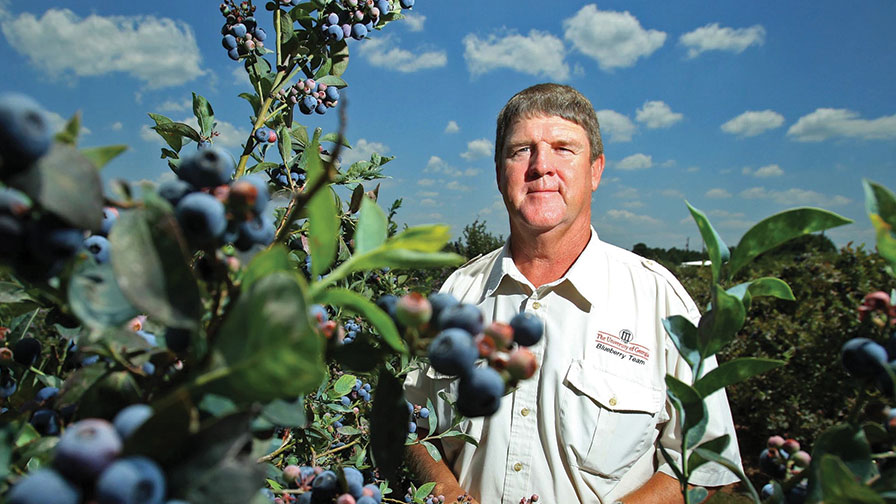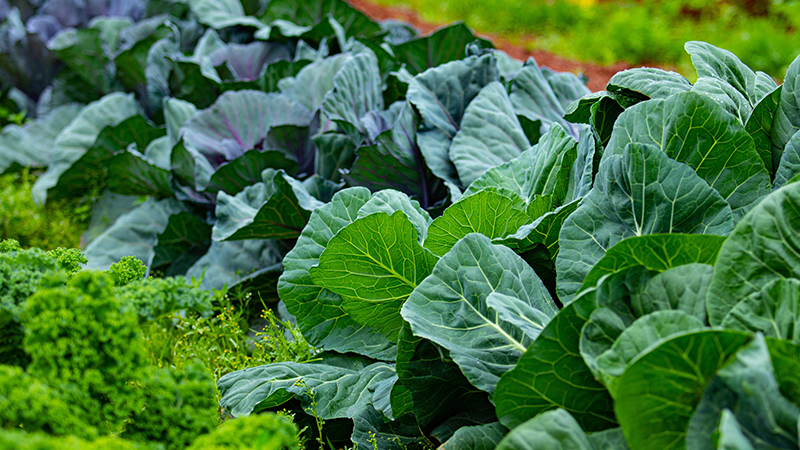How PGRs Rescue Berries After Spring Freeze
Spring freezes took a toll on blueberry crops last year. Now growers are seeking solutions that will help crops recover and mitigate the effects of freezes.

The research conducted by Scott NeSmith of the University of Georgia showed that some of the freeze damage to rabbiteye blueberries could be improved through the use of PGRs. (Photo: University of Georgia)
According to Scott NeSmith, a professor of horticulture at the University of Georgia’s Griffin Campus, freeze damage is a challenge faced by blueberry growers throughout the Southeast, and even mild damage can result in significantly reduced yields. Using plant growth regulators (PGRs), like gibberellic acid (GA), and trying different cultivars are both ways to help reduce crop loss from freeze damage.
PGRs to the Rescue
PGRs are one possible solution for recovering blueberries from frost damage. Over the years, they have been used extensively for various applications. PGRs are usually natural or synthetic compounds that mimic plant hormones in controlling various growth and development processes, and only small quantities are needed for the desired impact.
According to NeSmith, as the production of blueberries expanded across the Southeast several years ago, challenges emerged that limited production. Such challenges included poor pollination and fruit set, small fruit size, and crop loss due to spring freeze damage.
Rabbiteye blueberries with opened blooms can suffer freeze damage after being exposed to temperatures of 30°F and can suffer severe damage at temperatures 24°F and below. NeSmith’s research showed that some of these problems could be improved through the use of PGRs.
In the Field
Field trials completed by NeSmith in Georgia showed the application of GA may have some value in salvaging blueberry crops after plant flowers have sustained freeze damage.
During the trials, ‘Tifblue’ and ‘Brightwell’ rabbiteye blueberries, with the majority of their flowers at stages five and six of development, were exposed to a temperature of 27.5°F. After the freeze, both cultivars exhibited poor fruit set (1% to 5%) when relying only on pollination. When GA was applied after the freeze, fruit set improved (30% to 35%).
An additional experiment exposed the same cultivars to various temperatures ranging from 32°F to 23.9°F. Plants that were exposed to temperatures as low as 26.6°F that also received GA after the freeze had the same fruit set as the control plants, which were not exposed to the colder temperatures. All of the plants had fruit set of 2% or less after exposure to the temperature of 23.9°F.
The results indicated that the low limit for a positive response to GA is approximately 25°F to 27°F, particularly if the plant’s flowers are opened or almost opened.
According to NeSmith, decisions to apply gibberellic acid should not be based on air temperature, but rather on the level of flower damage. After frost damage occurs, examine flowers closely to determine the extent of the damage.
Different Varieties and Risks
While PGRs can be a useful tool, NeSmith is careful to note that long-term dependence on compounds can be risky, since manufacturers may change, and different government regulations might prohibit use. Therefore, another avenue might be using cultivars that are more adaptable or more suitable for your conditions.
Different risks are associated with growing different cultivars, and it depends largely on the climate in your region. NeSmith recommends looking at average flowering dates for different cultivars and studying data from historical weather records. Use this information to plan your plantings with the level of risk with which you are comfortable.
“The concept is to match varieties with the risk you are willing to accept,” NeSmith says.
Southern highbush blueberries are more cold hardy, but they are still subject to freeze damage. Gibberellic acid is not typically recommended for use with Southern highbush blueberries because the freezes the plants endure are earlier in the season and more intense. NeSmith’s recommendation for growing an early flowering, early ripening variety, like Southern highbush, is to use overhead irrigation frost protection.
The use of gibberellic acid could result in smaller, later-ripening blueberries, which would not be a desirable outcome for Southern highbush blueberry crops.
There may be cases where gibberellic acid could help Southern or Northern highbush blueberries. For example, one such case could be a freeze at 26°F to 28°F at just the right state of flowering — 30% to 50% open blooms, where the parts necessary for pollination were damaged, but seeds were still ‘alive,’ explained NeSmith.
“This scenario would be a candidate for possibly using GA, with some probability (emphasis on some) of it helping,” NeSmith says. “Growers would need to determine how much undamaged crop they have left, could that remaining crop set fruit without GA, and how many varieties on their farm were affected. Then, they would need to decide the market destination for their fruit, harvest method, and other factors to determine if using GA in this incident would be worth it.”
Another Line of Defense
A well-designed overhead irrigation system is an effective defense method against freeze damage in the Southeast, says NeSmith. However, even that won’t work every time, especially if you are only growing early ripening varieties. Frost fans may also help in some instances, but their success rate does not match that of a good irrigation system.
“Knowing your weather history and knowing your varieties is good for planning before freezes occur,” NeSmith says.
Overall, there is too much time in between these types of freezes for growers to do trials with GA to determine if they want to use it in the future, he said.
The decision to use GA depends on the year, the timing of the freeze, the varieties involved, and the preferences and attitude of the grower.










